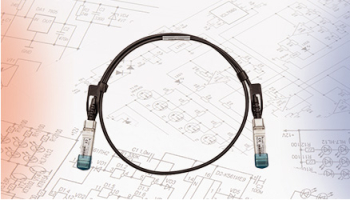Sometimes you need to connect switches, one of which has only RJ45 ports and the other only SFP ports. Does this mean the need for additional hardware, such as a media converter? Fortunately, no! There is a simpler and cheaper way that will allow you to connect the two devices without unnecessary complications.
Cheap and easy solution
RJ45, the standard for copper connections, predominates in legacy or office switches, while SFP (Small Form-factor Pluggable) ports, mainly used in fiber-optic networks that allow longer-distance connections. Just how to connect these completely different types of interfaces together?
You might think that the best solution is a media converter - a device that changes a copper (RJ45) signal to a fiber optic (SFP) signal. And yes, this is a good solution that will work. However, a converter is additional hardware, so both an additional cost and an additional device to provide power.
However, this is not the only solution. An alternative solution will be the use of RJ45 SFP modules, which allow direct connection of switches using ordinary UTP copper cable.

How SFP RJ45 modules work?
RJ45 SFP modules, otherwise known as copper modules, are small, smart devices that plug into SFP fiber ports on a switch. They allow us to connect a standard copper cable (such as LAN UTP patchcord). This allows us to easily and quickly connect a switch with RJ45 ports to one with only SFP ports, without the need for fiber optics.
Why should you choose RJ45 SFP modules?
- No additional equipment - saving and simplicity of the solution.
- Simple installation - all you do is plug in the cable and you're done!
- Range up to 100 meters - ideal for short distances in the office or server room.
- Reliability - fewer devices in the network chain means less risk of failure.

How to connect SFP port to RJ45? Step by step
- Choose the right RJ45 SFP module. Depending on what speeds and cable lengths you are interested in, choose the right SFP module that supports the RJ45 standard.
- Connect the copper cable. Insert the LAN UTP patchcord into the RJ45 SFP module. (The cable category affects the transmission range as it will be possible to realize with the SFP RJ45 transceiver).
- Connect the switch. Insert the module into the SFP port of the switch. Connect the other end of the cable to the RJ45 port on the other switch.
- Check the connection. Make sure the connection works properly and the switches can see each other.
That's it! No need to buy additional equipment.
What else to pay attention to? Operating temperature
Do not forget about the issue of higher operating temperature of copper modules relative to fiber optics. It is worth taking care of proper cooling, especially if several such modules are installed in the switch. We recommend installing SFP RJ45 modules every other slot, which will allow better heat dissipation and thus prolong the life of the equipment.

When to use copper transceivers and when to use alternatives?
RJ45 SFP modules are an excellent solution when you need to connect a switch equipped with SFP ports to a device that only has RJ45 ports. For higher speeds such as 10 Gbps and above, short DAC cables that provide high performance over a few meters (7m for passive DAC cables, 10m for active DAC cables) are better suited. What if you need a connection over a longer distance than the DAC offers? Then RJ45 SFP modules and copper cables come to the rescue again, guaranteeing a stable connection without unnecessary costs.






















